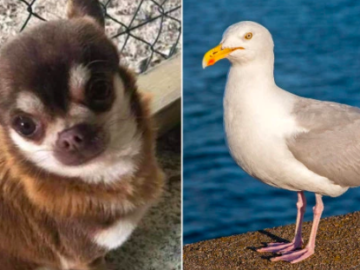An infectious and deadly condition that is known as ‘zombie deer disease’ is plaguing deer, moose and elk in 24 states in the US and 2 Canadian provinces.
The disease, which is Chronic Wasting Disease (CWD) attacks the brain, spinal chord and other tissues in the animal, leading to weight loss, loss of coordination, bouts of hyper-aggression and eventually, death.
Michael Osterhold, director of the Center for Infectious Disease Research and Policy at the University of Minnesota issued a warning that it could have an impact on humans.
‘It is probable that human cases of chronic wasting disease associated with consumption with contaminated meat will be documented in the years ahead,’ Osterhold said.
‘It’s possible the number of human cases will be substantial, and will not be isolated events.’
CWD is being compared to Mad Cow Disease, which was a problem in the UK in the 1980s and 1990s. Over 150 people were killed as a result.
CWD is not new. It was seen in captive deer in the late 60s and in the wild about 4 decades ago.
As of yet, no humans have contracted CWD but research does show the possibility of the disease being transmitted to humans and other animals.

The Centers for Disease Control and Prevention (CDC) said that the method of contraction will most likely be consuming infected meat. That is how Mad Cow Disease became a problem.
It is estimated that as many as 15,000 infected deer are eaten each year. That number is expected to rise 20% annually.
Osterhold was asked about the likelihood of humans contracting CWD and he said it was like a ‘throw at the genetic roulette table’.


The problem with CWD is especially prevalent in Southern Wyoming and Northern Colorado but it is spreading.
‘Since 2000, the area known to be affected by CWD in free-ranging animals has increased to at least 24 states, including states in the Midwest, Southwest, and limited areas on the East Coast,’ the CDC says.
‘It is possible that CWD may also occur in other states without strong animal surveillance systems, but that cases haven’t been detected yet.

‘Once CWD is established in an area, the risk can remain for a long time in the environment. The affected areas are likely to continue to expand.’
CWD earned its nickname because of the strange symptoms associated with it. They include exposed ribs and a vacant stare that happen as the animal slowly wastes away.

‘People have to understand the significance of this. We can’t wait until we have the first cases coming,’ Osterhold said.






